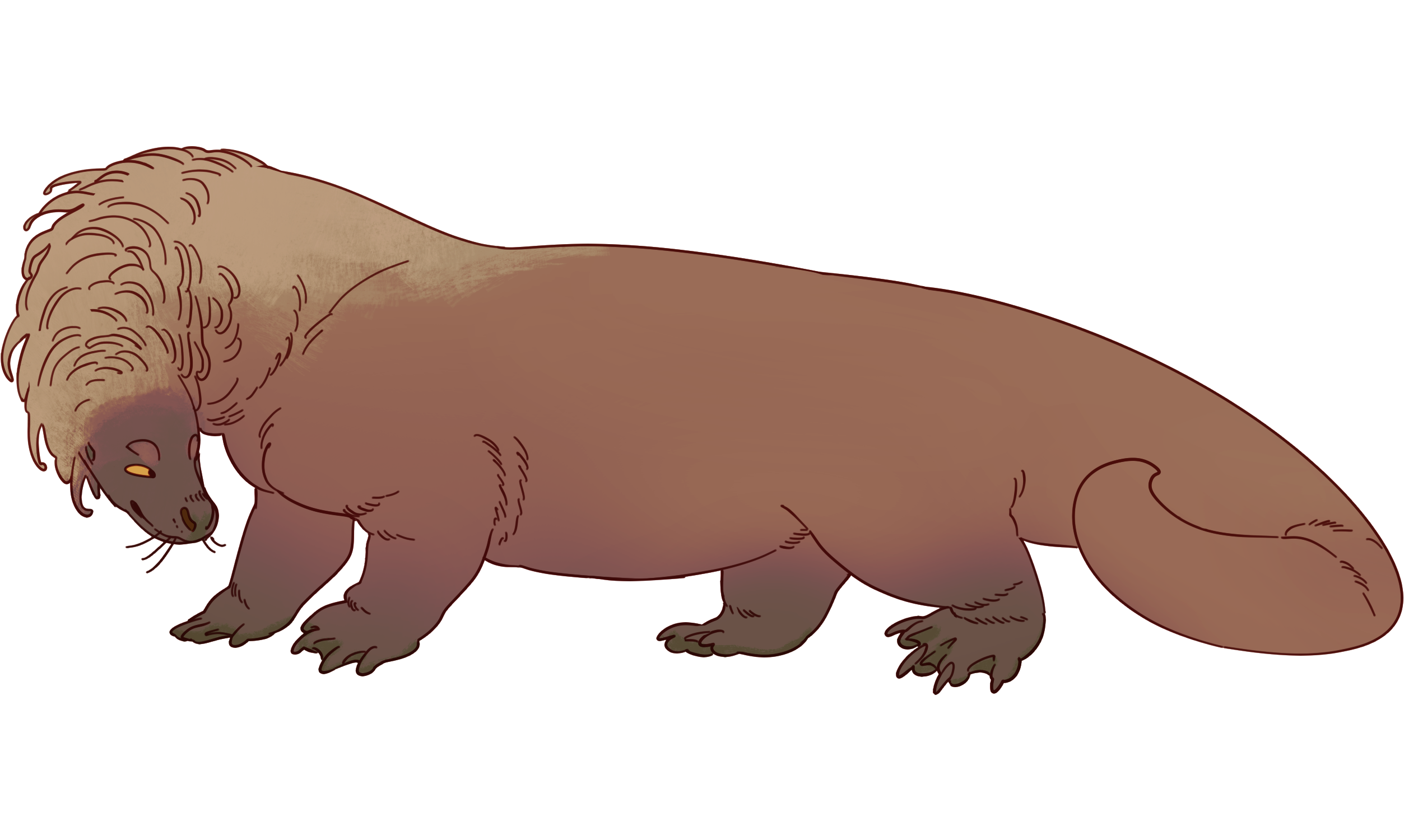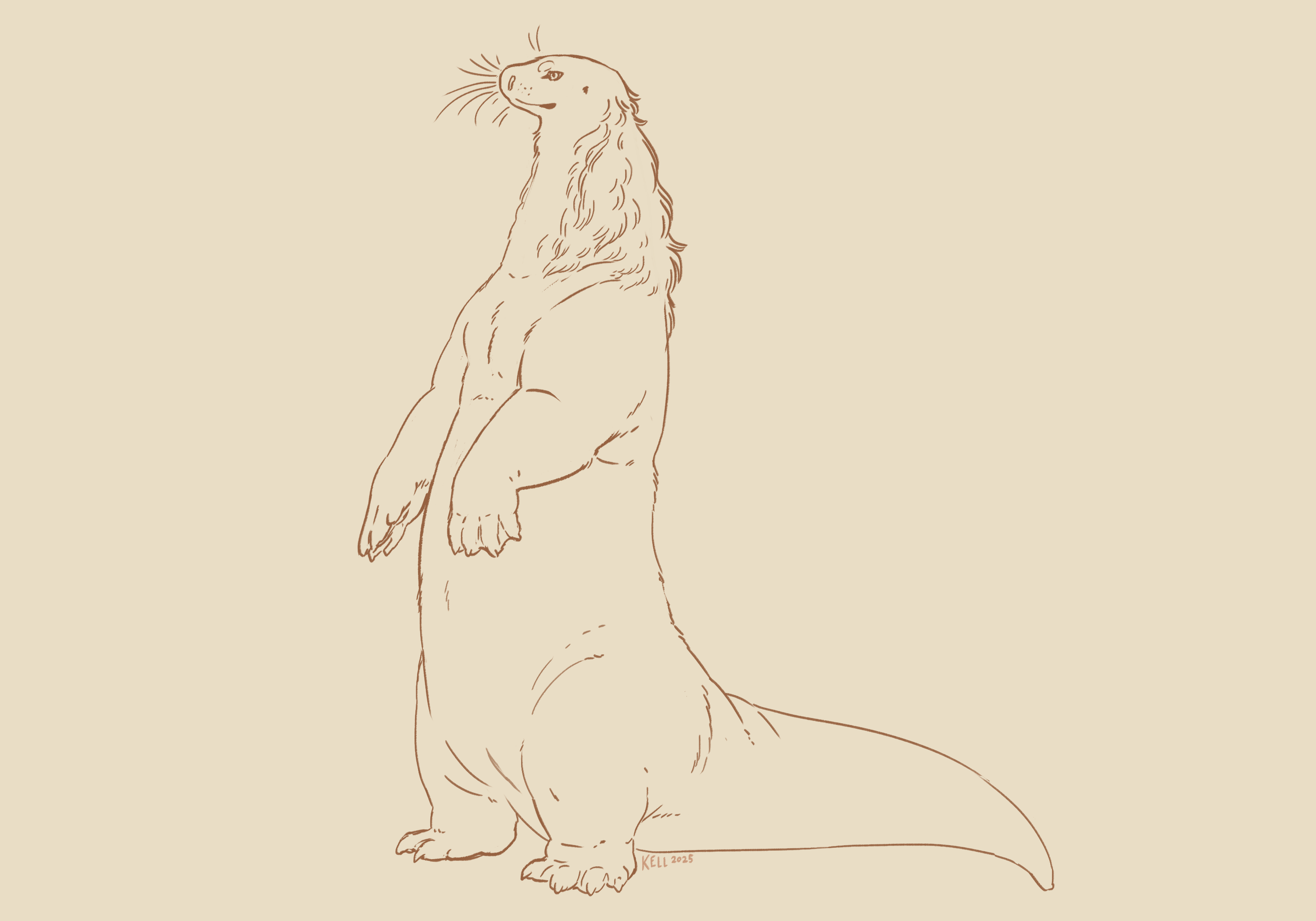Lissa
| Lissa | |
|---|---|
| |
| Lines by Searrach, colors by Kell | |
| |
| By Kell | |
| Characteristics | |
| Type | Mammal |
| Habitat | Semi-aquatic |
| Diet | Omnivore |
Physiology
Lissa are large waterdwelling mammals covered in a thick layer of fat, with powerful muscles and sleek pelts of fur. They have long, flexible necks and thick whiskers, and their mouths are well equipped for eating fish. However, they can eat a variety of other things as well, such as crustaceans, shellfish, plants, etcetera.
A notable trait of any lissa is the mane; a patch of longer fur running down the length of the nape and the withers. This mane is considered a point of attraction and an intimate area. Grooming another's mane is a deep display of affection.
Lissa display little to no obvious sexual dimorphism. Their sexual organs are contained inside of a watertight slit. They often do not exhibit a strong cultural designation of male and female. Typically they don't really distinguish unless they are aiming to have offspring with one another, but surrogacy is common enough anyway.
Lissa are able to mark their scent in some locations to signify what is theirs or that they have a continued presence in a space. Some deliberately use "scent marks" to insinuate they are sexually available or interested in someone, though, this is heavily context-dependant. The scent organs are located on the underside of the tail.
Behaviours
Though they are not very agile on land, these creatures prefer to rest and perform most of their activities on shore. They will often dry their fur in the sun after swimming, or drag a sizeable catch onto land for eating. Thus, lissa are quite comfortable on land as they have essentially nothing there to fear. Deep waters are where dangers are more likely to lurk.
When they are too far apart from one another to speak effectively, lissa are able to roughly communicate with long distance "howls." This predilection towards vocal expression has developed into a rich culture of oral history and song.
Lissa are primarily tough, well-equipped predatory animals, and are more likely to stand their ground if provoked. If a lissa is significantly agitated or threatened, they might whack their tail against the ground, or swing it at an offending animal. What they lack in dexterity, they certainly make up for in strength.


